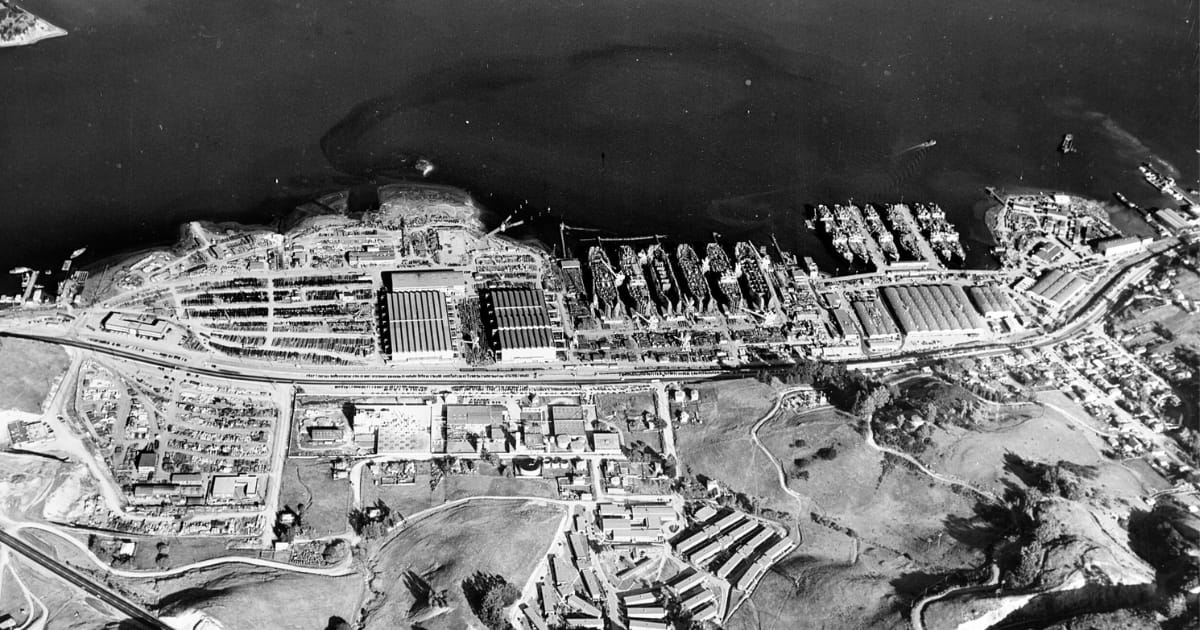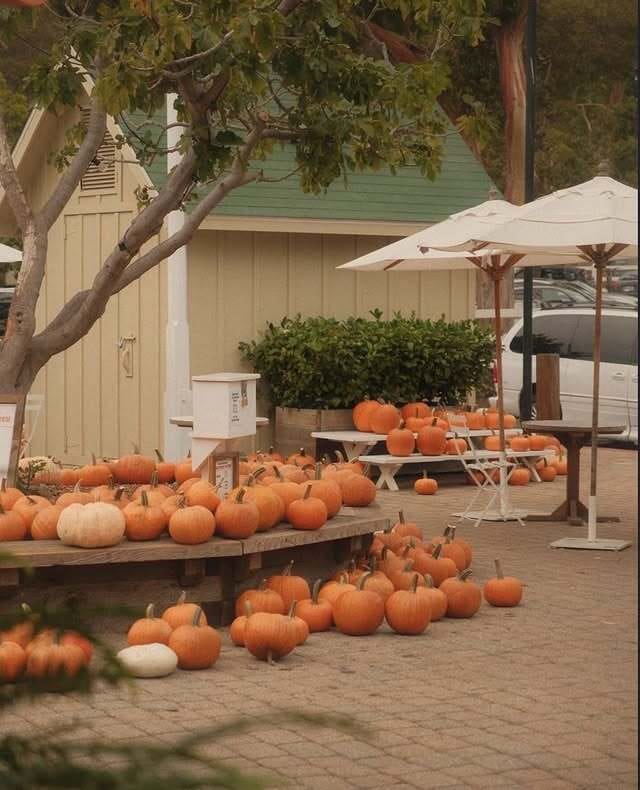I went down the Marinship rabbit hole this week. You’ll see a film below that launched a thousand questions, and the result is this week’s feature story. (You’re welcome?)
Truly though, this one came alive for me — maybe because I’ve had a foot in both places. I once worked out of an office on Harbor Drive in Sausalito, right on the old Marinship grounds, while living on Marina Bay Parkway in Richmond, just a short walk from Kaiser’s shipyards. We live and work in places all the time without really knowing them — and Sausalito and Richmond, opposite sides of the Bay, share a history I never really appreciated until I started digging.
But first! A few selected happenings for you this week:
Thursday kicks off the Mill Valley Film Festival, and Saturday is a double-hitter with Tiburon’s 42nd Annual Wine Festival in the afternoon, and (if you planned ahead and secured tickets) a night of fashion, music, art & community at the Marin Fashion Show.
Thanks for reading,
Kim Neumann
FEATURE STORY
Sausalito & Richmond: neighbors who helped win a war
Unless you work at Sausalito’s Marinship Way, or have a boat anchored, or maybe play tennis at the nearby courts, you wouldn’t have much reason to be traipsing around here.
It’s a world away from Sausalito’s postcard waterfront — no tourists or cafés or souvenir shops stacked with sweatshirts and (what is in there, crystals? Yup, wow. That’s a lot of crystals.). This is Sausalito’s saltier side: gritty, practical, maritime. The air is briny, with a whiff of diesel drifting from the repair yard.
It’s a working yard with a hidden layer.
This was Marinship — a shipyard built almost overnight in 1942, out of a salt marsh (and a neighborhood*). In less than four years it turned out ninety-three ships, employed 20,000 people, and left its mark on Marin in ways we still have mixed feelings about.
Across the Bay, Richmond’s yards became legend, with Rosie the Riveter stamped into our national memory. Sausalito’s story is quieter, but just as vital: it’s the other half of the Bay’s wartime shipbuilding machine.
*That neighborhood was Pine Point, and you can see photos of its demolition and an artist’s rendering of what happened to the existing homes to make way for the shipyard in this Sausalito Historical Society newsletter.
PS – here’s the short film that inspired this feature:
A Yard Built in a Blink
Three months after Pearl Harbor, the U.S. Maritime Commission tapped Bechtel (you’ve heard of them–we’ll fill in the gaps below) to build an emergency shipyard on Sausalito’s shoreline. The first assignment: Liberty ships — quick-to-build cargo vessels meant to rush food, troops, and supplies overseas. Germany was hammering Britain and the Soviet Union, and their survival depended on Atlantic convoys: those merchant ships sailing in packs with warship escorts to fend off German submarines.
Just six months into building the shipyard, the first ship — the William A. Richardson, named for Sausalito’s founder — slid into Richardson Bay, champagne breaking on her bow as twenty thousand people cheered from the shore.
Wait, who is Bechtel again?
It’s a name you probably know, even if you don’t think you do. Bechtel is the San Francisco–born construction giant behind some of the world’s biggest projects: Hoover Dam in the 1930s, BART under the Bay, the Channel Tunnel linking England and France, and even managing the Lawrence Livermore National Laboratory — a hub for nuclear research and national security that grew directly out of America’s World War II defense efforts.
When the U.S. needed a shipyard in Sausalito done yesterday, they turned to Bechtel who’d already proven it could pull off impossible feats like Hoover Dam and massive West Coast pipelines.
The “sure, we won’t name it after the mountain” Tamalpais
When Japan surrendered in 1945, eight Marinship tankers were anchored in Tokyo Bay — half of that entire class. At their head was the Tamalpais, named for the mountain that watched over the shipyard (though technically, Marin’s Board of Supervisors had to christen it “Tamalpais Creek,” since Navy rules said ships couldn’t be named after mountains).
Getting there had been a sprint. The yard set a world record with the SS Huntington Hills, finished in just thirty-three days. The switch to tankers came once U.S. leaders realized that cargo ships alone wouldn’t win a two-front war. Liberty ships had kept Britain and the Soviet Union alive across the Atlantic, but in the Pacific, fleets and air campaigns ran on fuel — and they needed it delivered across thousands of miles of ocean.
So Marinship pivoted. With its wide stretch of Richardson Bay and Bechtel’s knack for scaling up fast, the yard began turning out giant tankers with 10,000-horsepower engines (picture 50 Lamborghinis lined up on the Golden Gate Bridge, all flooring it at once — that kind of horsepower). Each engine was installed in one piece — a feat no other yard even attempted. These ships were floating pipelines, carrying the gasoline and oil that kept fleets moving and planes in the air.
Across the Bay
Richmond’s shipyards were a different beast altogether: four yards, 90,000 workers, and more than 740 ships launched in just four years — mostly Liberty and Victory ships carrying food, munitions, and troops across both oceans. One Liberty ship was famously built in less than five days, start to finish.
By comparison, Sausalito’s Marinship employed about 20,000. Smaller, yes, but with a distinct mission. While Richmond’s cargo ships carried the goods, Marinship’s tankers supplied the fuel that kept those fleets — and the war effort itself — moving.
Women With Torches
Everyone knows Rosie from Richmond. But Sausalito had its Rosies too. Women poured into the yard, many with no industrial experience, and took up welding torches.
As you might guess, putting women on the front lines of industrial work for the first time in real numbers didn’t just build ships — it made those in charge, well… uncomfortable. Indulge me for a moment.
Scene: The Boilermakers Union hall, 1943.
Union Man (arms folded, frowning): “No membership for them. Rules are rules!”
Marinship Rep: “Gentlemen, have you LOOKED at the yard lately? Most of our welders are women. Shut them out and you’ll be up a creek without a paddle.”
Union Man (sputtering, hot under the collar): “…well… horsefeathers!”
Meanwhile, back at the yard in Sausalito… sparks fly, torches blaze. Women in heavy leathers are busy building ships, one humming Stormy Weather, another spitting tobacco twenty feet across the shop.
Within weeks, those same women marched into the San Francisco union hall, hard hats tucked under their arms, and plunked down in chairs never open to them before.
Union Man (deflated, muttering): “Aw, shucks, fellas — quit bellyachin’. Give them the cards already.”
And, scene.
It wasn’t full equality — not yet. Pay gaps lingered, and the fight for racial integration came the next year with James v. Marinship (argued by a young Thurgood Marshall, it struck down segregated unions and required equal membership for Black workers — one of the first cracks in California’s Jim Crow–style labor system, right here in Sausalito).
So, that was real progress being made in a shipyard — with women in coveralls, holding welding torches, hitting the spittoon every time.
Over in Richmond…
Across the Bay, the Boilermakers Union also tried to corral women and Black workers into segregated ‘auxiliary locals’ — second-class unions with no vote, no real bargaining power, and no path to the same wages or rights as white men.
But Richmond had Kaiser’s shipyards — bigger, louder, more public — and Henry Kaiser himself prized efficiency above all else. To keep production moving, he layered on programs that gave Richmond a reputation for being more progressive. Workers there got the first real system of industrial health care (what became Kaiser Permanente) and even on-site child care, which made it possible for more women and families to join the workforce.
The discrimination fights were the same on both shores, but Richmond had the resources and visibility to become the poster child for the home front — while Marinship, smaller and scrappier, fought its battles more quietly.
Two Halves of the Bay’s Story
Sausalito’s Marinship
When Marinship closed in 1946, the massive yard that had once employed 20,000 people didn’t vanish — it fractured into new uses. The warehouses and docks were repurposed: some became boatworks and small maritime businesses, others artist studios, light industry, or offices. The U.S. Army Corps of Engineers took over the old fitter’s warehouse and created the Bay Model — the enormous hydraulic replica of San Francisco Bay and school field trip staple that shows how tides, currents, and flows shape the estuary.
Just up the hill, Marin City remained. Built as “temporary” housing, it became permanent, and over the decades weathered disinvestment, redevelopment fights, and economic shifts. The Gateway Shopping Center, built in the 1990s on the site of the old flea market, brought national retailers and steady tax revenue but also displaced local businesses and fell short of its hiring goals for residents. Marin City is still here, still Marin’s most diverse community — a legacy of wartime migration and the families who stayed long after the shipyard closed.
Richmond’s Legacy
Across the Bay, Richmond’s wartime story left its own imprint. Henry Kaiser’s shipyard health plan — an experiment to keep his workers cared for — became Kaiser Permanente, today one of the largest health systems in the country. Richmond also preserved its shipyard legacy with a national historical park, and of course, a very cool poster.
The Self-Guided Walking Tour
In Sausalito:
• Bay Model Visitor Center — once the shipyard’s fitter’s warehouse.
• Old Mold Loft — where shipwrights once traced full-scale hulls onto the floor, now studios and sailmakers.
• Marinship waterfront — walk the slips where Liberty ships and tankers once launched.In Richmond:
• Rosie the Riveter/WWII Home Front National Historical Park Visitor Center — inside the old Maritime Child Development Center.
• Rosie the Riveter Memorial — a waterfront tribute to the women of the yards.
• Ford Assembly Plant — once cranking out tanks and jeeps, still standing on the Richmond shoreline.
HAPPENINGS
Latest events + reader picks. Double-check with venue for updates.
Thursday 10/2
Mill Valley Film Festival (various locations), 10/2-12
Friday 10/3
Movies in the Park: The Little Mermaid, Mill Valley, 6:45-8:45pm
Saturday 10/4
Classic Car Show, Pt. Reyes Station, 11am-3pm
Crochet Collective: Meet up + Drop in Help, Mill Valley 2-4pm
Marin Fashion Night, Sausalito 5-10:30pm
Big Easy Beats, Bets and Bites, San Geronimo, 5-10pm
Sunday 10/5
Restorative Writing Retreat, Lagunitas 10am-4:30pm
Color Theory & Collage, Mill Valley 10am-12pm
MYSTIC Book Club: The Book of Alchemy, Mill Valley 4-6pm
See more events here.
SPOTTED
Go get that pumpkin! 🎃
✍️ Got a story to share? Reach out!
Thanks for reading,
Kim

Kim Neumann, Publisher




